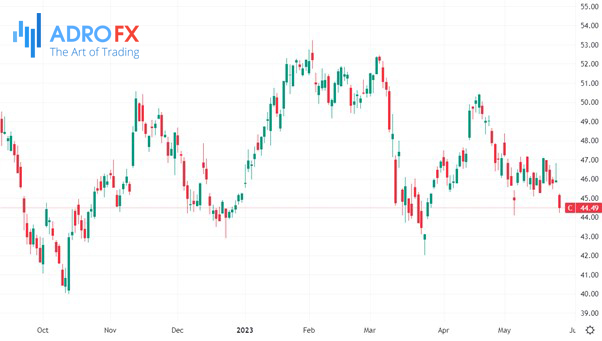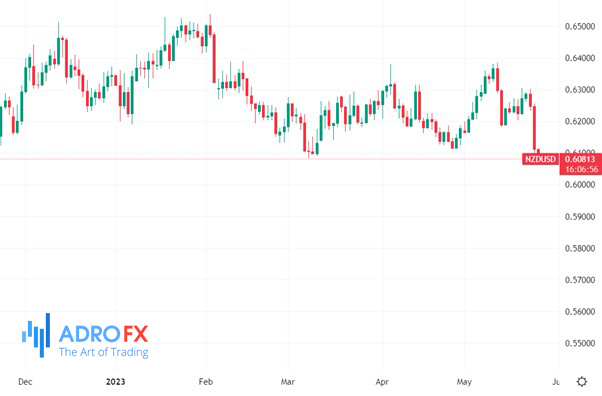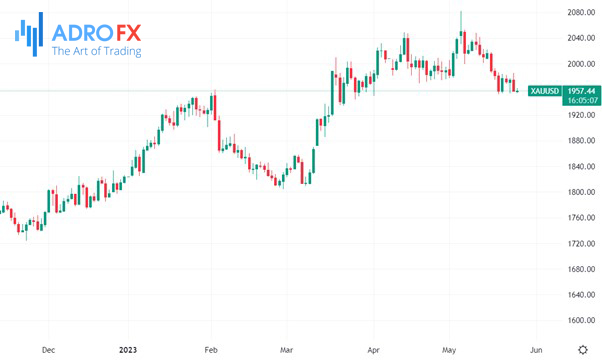Wall Street Slides on Debt Ceiling While UK and NZ React to CPI | Daily Market Analysis

Key events:
- USA - GDP (QoQ) (Q1)
- USA - Initial Jobless Claims
- USA - Pending Home Sales (MoM) (Apr)
On Wednesday, the major indices of Wall Street closed in negative territory due to the ongoing discussions between the White House and Republican representatives regarding the increase in the US debt ceiling, which have not resulted in a deal yet.
The absence of advancement in raising the US government's debt limit of $31.4 trillion before the June 1st cutoff, despite multiple rounds of inconclusive negotiations, has heightened investors' anxiety as the possibility of a devastating default becomes more pronounced.
Negotiators from Democratic President Joe Biden and leading congressional Republican Kevin McCarthy engaged in what the White House referred to as productive discussions.

The Dow Jones Industrial Average experienced a decline of 255.59 points, equivalent to a decrease of 0.77%, closing at 32,799.92. Similarly, the S&P 500 lost 30.34 points, or 0.73%, settling at 4,115.24. The Nasdaq Composite also saw a drop of 76.08 points, or 0.61%, finishing at 12,484.16.
Among the eleven sectors within the S&P 500, ten concluded the day with negative results, with real estate experiencing the most significant decline. However, the energy sector managed to be the sole gainer.
Throughout the day, the CBOE Volatility Index, commonly referred to as Wall Street's fear gauge, remained at around three-week highs.
In addition to the discussions surrounding the debt ceiling, the market also focused on Federal Reserve policy. Following the release of the minutes from the Fed's May 2-3 meeting, which indicated that officials "generally agreed" last month that the certainty of further interest rate increases had diminished, stocks maintained their downward trend.

Citigroup Inc (NYSE:C) witnessed a decline of 3.1% in its shares as the bank decided to abandon the previously planned $7 billion sale of its Mexican consumer unit, Banamex. Instead, Citigroup intends to list the unit independently.
The released CPI data on Wednesday revealed that the UK's headline CPI inflation rate experienced a smaller-than-anticipated decrease in April, dropping to 8.7% from the previous month's 10.1%. However, the core inflation figures, which exclude food and energy, increased to 6.8%. These persistent inflationary pressures are indicating that the Bank of England may implement an extended tightening policy.
Market reactions are reflecting expectations of 2-3 additional 25 basis points rate hikes over the next three meetings. Similar to the situation in the United States, the UK is determined to curb inflation, potentially leading to an economic slowdown in the country during the latter half of 2023.

Moreover, following the Reserve Bank of New Zealand's decision to raise rates by 25 basis points, the New Zealand dollar experienced the most significant decline among currencies. However, the central bank's indication that they are likely finished with further rate hikes surprised many, as there was a prevailing expectation of continued monetary tightening, potentially even with a more aggressive approach.
Although the Reserve Bank of New Zealand did mention that rates would need to remain at their current levels until the middle of next year, this statement could potentially limit the extent of the currency's decline in the long run.

Despite the ongoing issues surrounding the US, the dollar has been strengthening and reaching two-month highs. This trend can be attributed to the market's growing expectations of higher interest rates in the United States, as well as a certain level of demand for safe-haven assets. While this may seem counterintuitive given the debt ceiling situation, it is not entirely surprising considering the limited alternative options available to investors.
Gold prices remained close to two-month lows on Thursday as the market continued to be cautious about the US debt ceiling issue. The price of bullion remained within a narrow trading range of $1,950 to $1,980 per ounce, which has been observed over the past week, following its decline below the significant $2,000 level.
The primary focus remained on the ongoing negotiations between lawmakers regarding the increase in the US spending limit. However, there were no clear indications from Democrat or Republican negotiators regarding when a deal could potentially be reached.
This situation is also occurring ahead of the June 1st deadline for a possible US debt default, which carries the risk of pushing the country into recession and having severe implications for the global economy. Fitch, a ratings agency, issued a warning about a potential downgrade of US ratings in the event of a default.
Despite the prevailing market uncertainty, gold experienced limited demand as a safe-haven asset, with traders instead favoring the US dollar.









